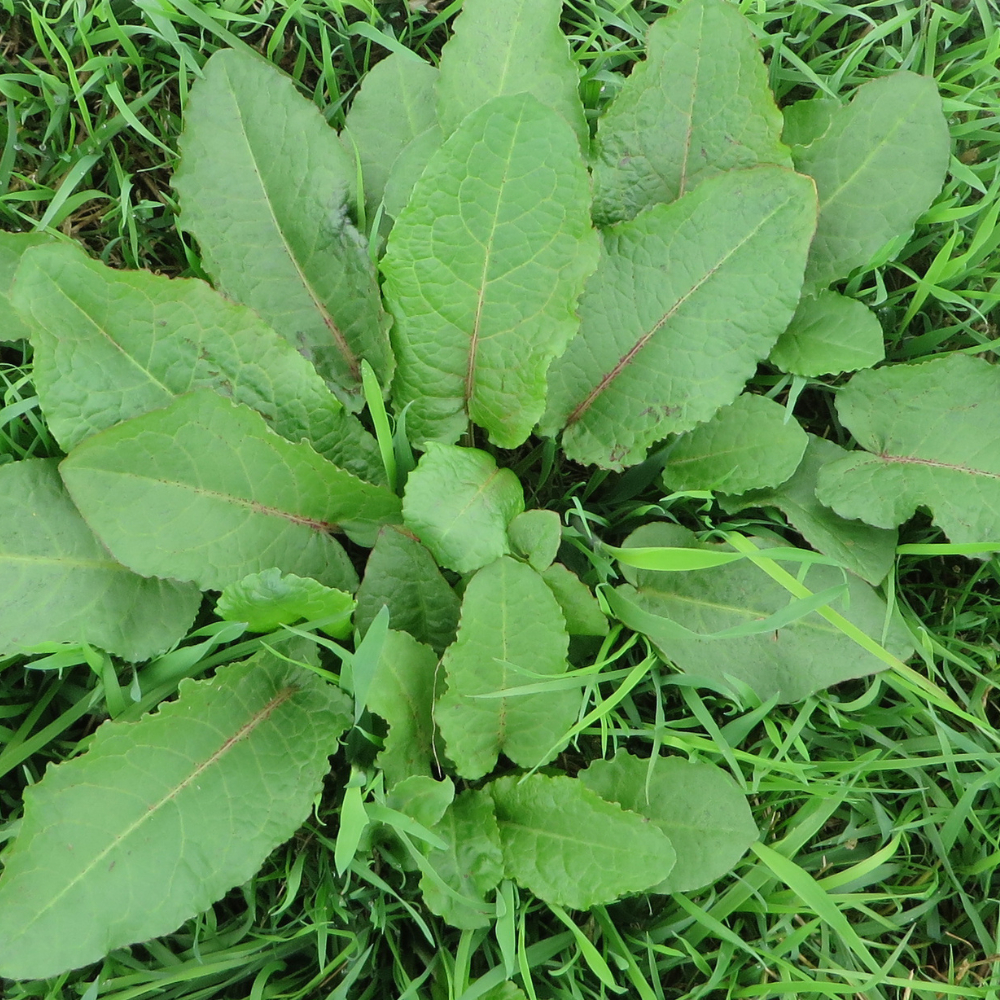Broad-leaved docks are perennial plants that are a problem weed in both newly sown leys and established grassland.
Broad-leaved dock

What is broad-leaved dock?
Broad-leaved docks (Rumex obtusifolius) are perennial plants that are a problem weed in both newly sown leys and established grassland. Although the plants are not poisonous to livestock, they are classified as an injurious weed, so should not be allowed to spread or seed.

Biology
Broad-leaved dock is a tall perennial plant that can produce 60,000 seeds.
Seeds can remain viable for up to 80 years.
Plants have deep tap roots (up to 1.5m).
Plants can regenerate from root fragments.
Individual plants of broad-leaved dock can be very long-lived, especially in pastures.
How can I identify broad-leaved docks?
Broad-leaved docks can grow between 40–150 cm tall, they have large oval leaves with smooth edges.
Leaves are usually at least half as wide as they are long and the flowering stems are well branched.
Flowering in late June or July and the fruits, when fully ripe, are a reddish-brown colour and often remain in clusters on the stems.

Broad-leaved dock in seed

Broad-leaved dock close up
Why are broad-leaved docks a problem?
- They are the most pernicious and damaging of all grassland weeds.
- They thrive in intensively used and highly fertilized grassland.
- Docks compete with grass for light, water and nutrients and thus reduce grass yields.
- Docks have only 65% of the feed value of grass.
- Grazing losses amount to more than £30 million/year.
- More than 15% of productive grassland has a serious dock infestation.
- Presence of docks in silage can affect fermentation, thus reducing overall quality.
How do I control broad-leaved docks?
Control at the rosette stage, from 150mm to 250mm across or high, when plants are young and actively growing is the optimal timing for control.
Topping the plants is not enough, neither is intensive grazing or silage cutting, as the deep tap roots allow them to recover and set viable seeds.
Use Envy® or Leystar® in newly sown leys to control seedling docks. Where docks have grown from root fragments and are stronger, Envy is the best option.
Use Forefront® T or Pas•Tor Agronomy Pack when dealing with high and long-established populations in fields grazed by cattle or sheep. Alternatively, use Doxstar® Pro in fields which are being cut for fresh grass, silage, hay or haylage.
Use Grazon® Pro for spot treatment.
Leystar Herbicide
Leystar® is a selective herbicide for use in newly sown leys, established grassland, grass for seed, forage maize, cereals and cereals under/sown with grass.
Envy Herbicide
Envy controls buttercups, dandelions and other perennial weeds in paddocks and low productivity grassland.
Forefront T Herbicide
Forefront® T delivers the highest levels of control of docks, thistles, nettles, ragwort, buttercups and dandelions.
Pas·Tor Agronomy Pack
Pas·Tor Agronomy Pack delivers long-lasting perennial weed control and is excellent for docks, thistles and nettles.
Doxstar Pro Herbicide
Doxstar® Pro is a concentrated formulation controlling all species of docks in established grassland.